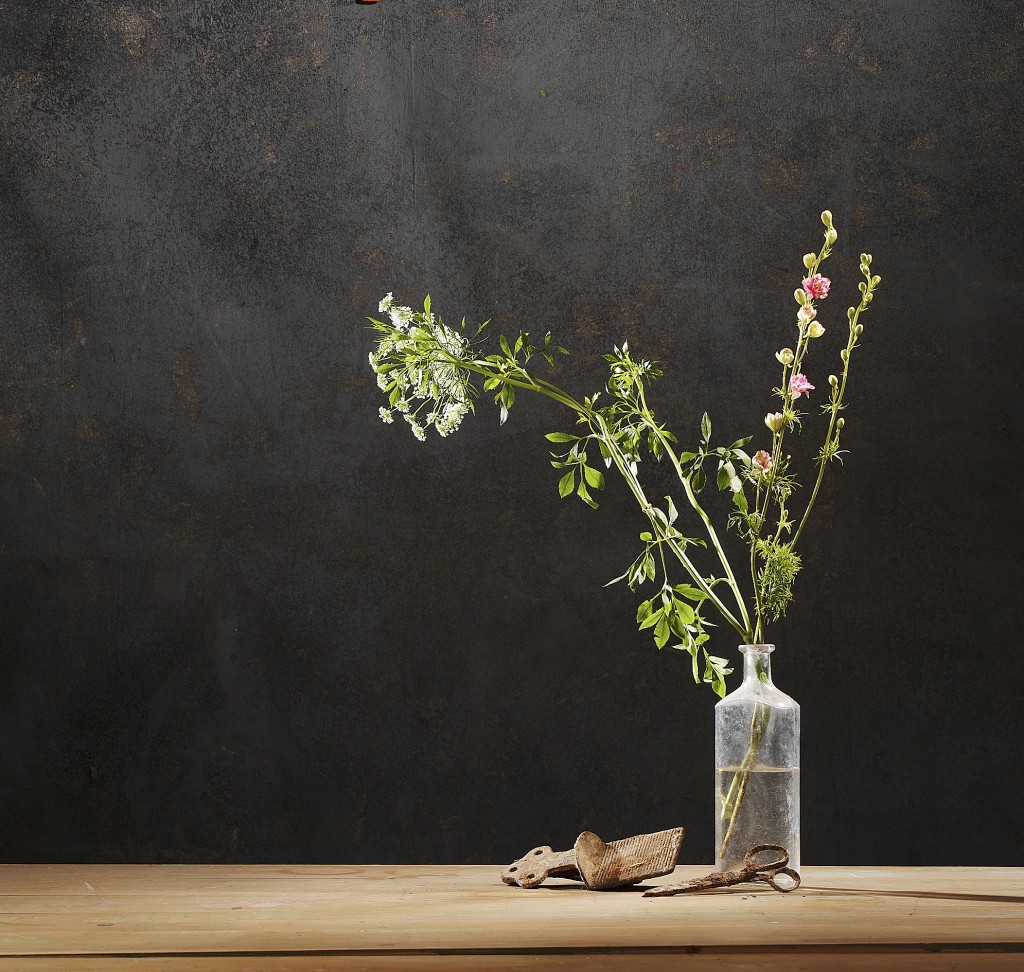On Wabi-Sabi Weekends, I post excerpts from my book, Simply Imperfect: Revisiting the Wabi-Sabi House.
“If you fiddle this way and that with the flowers and consequently they wither, that will be no benefit. It is the same with a person’s life.”—Sen Soshitsu XV
Wabi-sabi flowers (chabana) aren’t arranged. They’re placed, in their most natural form, into unpretentious vessels.
Nagarie, a simple, austere style of arranging flowers that literally translates as “throw in,” evolved alongside tea ceremony in the 16th century. This method requires no training or talent, but it does require humility, in admitting we can’t improve on nature, and a willingness to observe without judging or meddling. (No problem, right?)
“It is just meaningless to employ readymade ideas when arranging flowers,” Shogo Kariyazaki, Japan’s most famous flower arranger, told the Daily Yomiuri. “Flowers are already complete in their natural beauty. You need to have originality and ingenuity when making beautiful arrangements with them…Arranging flowers can be compared to cooking, You can make tasty dishes once you are able to apply your own ideas to basic recipes.”
Unlike ikebana, which has a litany of stringent, stylized rules about how to combine and arrange flowers, chabana (“tea flowers”) has only one: strive for a simple, natural look. Wabi flowers are always seasonal, arranged to look as they do in the fields. Each stem gets room to breathe; they’re never crowded into big, frothy mounds. Stems aren’t cut down to create uniformity; no frogs or wires are used. Branches are never forced, and tulips bending in their final days are as welcome as sprightly daffodils.
Minimalism is key: One wild rose bud trumps a blowsy display of English roses. Pick a few chicory stems from between the sidewalk’s cracks and let them settle into an old bottle. Work with single flowers and small, odd numbers. (That tired old design rule that sets three as the standard became the norm because it works.)
Forget about flowers and use a solitary branch (bare in midwinter, budding in springtime) or a few tall grasses. Trade in crystal vases for humble containers: baskets, bamboo slices, hollowed gourds, old jars, a well-shaped bottle that held dessert wine.
Pretty old wabi-sabi bottles—ranging in price from $1 in parts of West Texas to $15 in Northern California—are prolific at pawn shops and flea markets.

2 Responses to Wabi-Sabi Weekend: Stop Fiddling with the Flowers